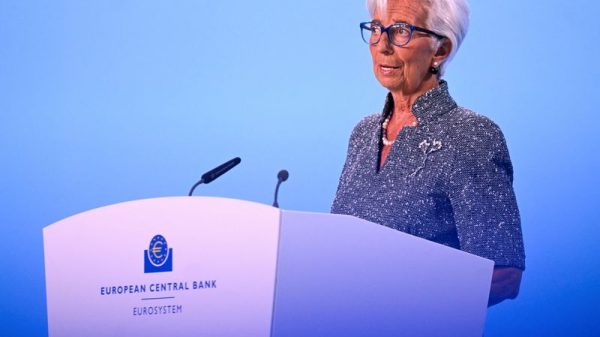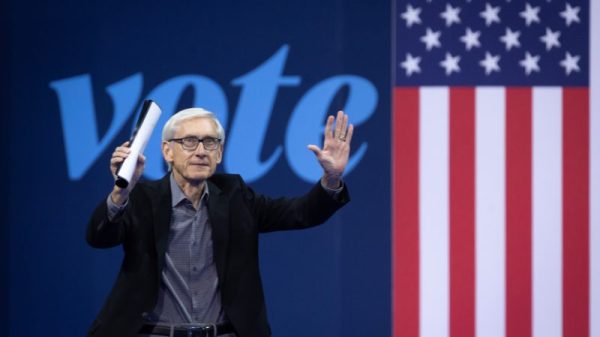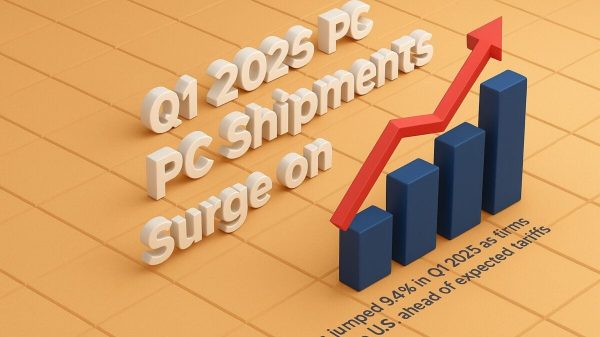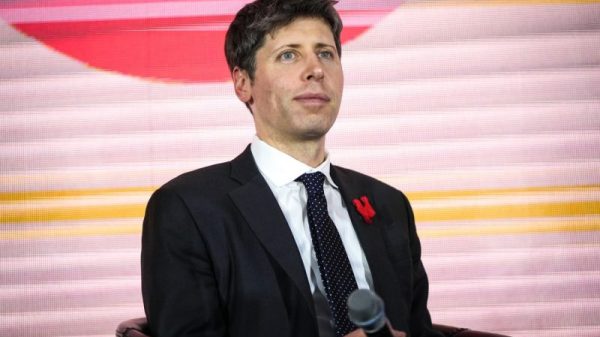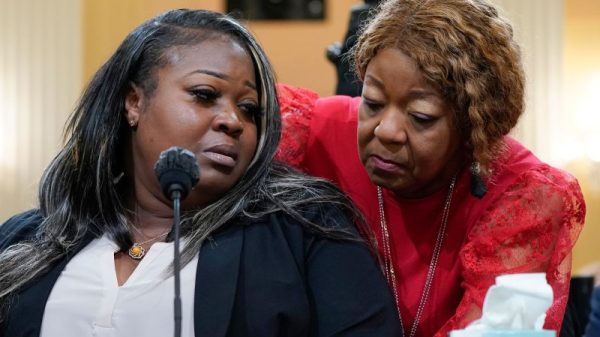Capital One Financial Corp. (COF) reported a robust third quarter for 2024, with a net income of $1.8 billion, or $4.41 per diluted share. Adjusted earnings per share stood at $4.51. The company’s financial health was underpinned by a 5% increase in revenue, primarily from higher net interest income, leading to pre-provision earnings of $4.7 billion, a 3% rise. Despite a challenging economic environment, Capital One showcased a solid liquidity position and an optimistic outlook for its operating efficiency ratio and upcoming marketing initiatives.
Key Takeaways
Capital One’s net income reached $1.8 billion, with $4.41 earnings per diluted share and $4.51 adjusted earnings per share.
Revenue increased by 5%, driven by higher net interest income.
Provision for credit losses decreased to $2.5 billion.
Total liquidity reserves stood at approximately $132 billion.
Net interest margin improved to 7.11%.
Domestic Card segment saw a 5% growth in purchase volume.
Consumer Banking’s auto originations rose by 23%.
Capital One expects an operating efficiency ratio in the low 42s for 2024.
The acquisition of Discover is progressing, with completion targeted for early 2025.
Credit performance remains stable, with delinquencies and charge-offs above pre-pandemic levels.
Company Outlook
Anticipated modest improvement in operating efficiency ratio for 2024, expected to be in the low 42s.
Increased marketing efforts planned for the second half of 2024 to drive growth.
Acquisition of Discover seen as a significant opportunity, pending regulatory and shareholder approvals.
Bearish Highlights
Overall consumer banking revenue decreased by 3% due to higher deposit costs.
Slight declines in Commercial Banking loan balances.
Ongoing litigation creates uncertainty around the CFPB late fee rule’s implementation.
Bullish Highlights
Strong liquidity with a cash position of about $49 billion.
Improved net interest margin due to higher card and auto yields.
Positive growth in the Domestic Card segment and auto originations in Consumer Banking.
Misses
Charge-off rate increased to 5.61%, influenced by the end of the Walmart (NYSE:WMT) agreement.
Q&A Highlights
CEO Richard Fairbank discussed stable credit performance and the impact of pandemic-era decisions.
Anticipated risks and a pullback in originations were noted for 2022 and early 2023.
Revenue suppression from the end of the Walmart agreement could become a net positive for net interest margins if credit conditions improve.
Andrew Young addressed capital management strategy, citing a CET1 ratio of 13.6% and a $150 million share buyback in Q3.
John Pancari inquired about the impact of Walmart on loan yields and the potential effects of the proposed CFPB late fee rule.
Capital One’s third-quarter earnings call highlighted the company’s financial resilience and strategic initiatives aimed at fostering growth amidst a complex regulatory and economic landscape. With a clear focus on disciplined growth and capitalizing on strategic acquisitions, Capital One continues to navigate the challenges of the market while preparing for a future of enhanced consumer banking and global payments capabilities.
InvestingPro Insights
Capital One Financial Corp.’s strong third-quarter performance is further supported by recent data from InvestingPro. The company’s market capitalization stands at $61.66 billion, reflecting its substantial presence in the financial sector. With a P/E ratio of 15.24, Capital One appears to be reasonably valued compared to industry peers, especially considering its robust earnings report.
InvestingPro Tips highlight Capital One’s strengths in the current market. The company has maintained dividend payments for 30 consecutive years, demonstrating a commitment to shareholder returns that aligns with its reported financial stability. This consistency is particularly noteworthy given the challenging economic environment mentioned in the earnings report.
Moreover, Capital One’s stock has shown a remarkable 75.54% price total return over the past year, trading near its 52-week high. This performance underscores investor confidence in the company’s strategic direction, including its planned acquisition of Discover and its focus on operating efficiency.
The company’s profitability over the last twelve months, as noted by InvestingPro, supports the positive earnings figures reported in the third quarter. With analysts predicting continued profitability this year, Capital One seems well-positioned to maintain its growth trajectory and execute its marketing initiatives planned for the latter half of 2024.
For investors seeking a deeper understanding of Capital One’s financial health and future prospects, InvestingPro offers additional insights. The platform provides 9 more tips for COF, which could offer valuable context to the company’s recent earnings and strategic outlook.
Full transcript – Capital One Financial Corporation (NYSE:COF) Q3 2024:
Operator: Good day, and thank you for standing-by. Welcome to the Capital One Q3 2024 Earnings Call. Please be advised that today’s conference is being recorded. I would now like to hand the conference over to your speaker today, Jeff Norris, Senior Vice President of Finance. Please go ahead.
Jeff Norris: Thanks very much, Josh, and welcome, everyone. We’re webcasting live over the Internet as usual. And to access the call on the Internet, please log on to Capital One’s website at capitalone.com and follow the links from there. In addition to the press release and financials, we’ve included a presentation summarizing our third quarter 2024 results. With me today are Mr. Richard Fairbank, Capital One’s Chairman and Chief Executive Officer; and Mr. Andrew Young, Capital One’s Chief Financial Officer. Rich and Andrew will walk you through this presentation. To access a copy of the presentation and the press release, please go to Capital One’s website, click on investors, then click on Financials and then click on quarterly earnings release. Please note that this presentation may contain forward-looking statements. Information regarding Capital One’s financial performance and any forward-looking statements contained in today’s discussion and the materials speak only as of the particular date or dates indicated in the materials. Capital One does not undertake any obligation to update or revise any of this information, whether as a result of new information, future events or otherwise. Numerous factors could cause our actual results to differ materially from those described in forward-looking statements. And for more information on these factors, please see the section titled forward-looking Information in the earnings release presentation and the Risk Factors section of our annual and quarterly reports accessible at Capital One’s website and filed with the SEC. Now, I’ll turn the call over to Mr. Young. Andrew?
Andrew Young: Thanks, Jeff, and good afternoon, everyone. I will start on Slide 3 of tonight’s presentation. In the third quarter, Capital One earned $1.8 billion or $4.41 per diluted common share. Included in the results for the quarter were adjusting items related to Discover integration costs and a small downward revision to our FDIC special assessment estimate. Net of these adjusting items, third quarter earnings per share were $4.51. Pre-provision earnings in the third quarter increased 3% from the second quarter to $4.7 billion. Revenue in the linked quarter increased 5%, driven by higher net interest income. Non-interest expense increased 7%, driven by increases in both operating expense and marketing spend. Provision for credit losses was $2.5 billion in the quarter, down $1.4 billion relative to the prior quarter. The quarterly decrease was primarily driven by the absence of the second quarter’s one-time allowance build for the termination of the Walmart partnership, a decline in the coverage ratio in card and a $40 million decrease in net charge-offs. Turning to Slide 4. I will cover the allowance in greater detail. We released $134 million in allowance this quarter, and our allowance balance now stands at $16.5 billion. Our total portfolio coverage ratio decreased 7 basis points to 5.16%. The decrease in this quarter’s allowance and coverage ratio was largely driven by allowance releases in our Card and Consumer Banking segments. I’ll cover the drivers of the changes in allowance and coverage ratio by segment on Slide 5. In our Domestic Card business, we released $66 million of allowance, which decreased coverage by 18 basis points to 8.36%. Our credit outlook has improved slightly as our confidence in the stability of underlying credit trends has grown, driving a modest release in allowance. In our Consumer Banking segment, we released $50 million in allowance, resulting in a 10-basis point decrease to our coverage ratio. The release was driven by strong credit performance and increasing recoveries in our auto business. And finally, our commercial banking allowance decreased by $14 million, resulting in the coverage ratio remaining essentially flat at 1.76%. Turning to Page 6. I’ll now discuss liquidity. Total liquidity reserves in the quarter increased about $9 billion to approximately $132 billion. Our cash position ended the quarter at approximately $49 billion, up about $4 billion from the prior quarter, driven primarily by continued strong deposit growth. Our preliminary average liquidity coverage ratio during the third quarter was 163%, up from 155% in the second quarter. Turning to Page 7. I’ll cover our net interest margin. Our third quarter net interest margin was 7.11%, 41 basis points higher than last quarter and 42 basis points higher than the year ago quarter. The sequential increase in NIM was largely the result of three factors. First, we had higher card and auto yields. As a reminder, the card yield benefited from a full quarter impact of the termination of the revenue-sharing agreement with Walmart. The removal of revenue sharing increased the total company NIM by 12 basis points quarter-over-quarter and 22 basis points relative to the year ago quarter. Second, there was one additional day in the third quarter. And finally, we had a higher mix of card loans on the balance sheet. Turning to Slide 8. I will end by discussing our capital position. Our common equity Tier 1 capital ratio ended the quarter at 13.6%, 40 basis points higher than the prior quarter. Higher net income in the quarter was partially offset by the impact of dividends, loan growth and $150 million of share repurchases. As a reminder, the announcement of the acquisition of Discover constituted a material business change. Therefore, we continue to be subject to the Federal Reserve’s pre-approval of our capital actions until the merger approval process has concluded. With that, I will turn the call over to Rich. Rich?
Richard Fairbank: Thank you, Andrew, and good evening, everyone. Slide 10 shows third quarter results in our Credit Card business. Credit Card segment results are largely a function of our Domestic Card results and trends, which are shown on Slide 11. In the third quarter, our Domestic Card business delivered another quarter of top-line growth, strong margins and stable credit. Year-over-year purchase volume growth for the quarter was 5%. Ending loan balances increased $9.1 billion or about 6% year-over-year. Average loans increased about 7% and third quarter revenue was up 10%, driven by the growth in purchase volume and loans. Revenue margin for the quarter increased 43 basis points year-over-year to 18.7%. The full quarter effect of the end of the Walmart revenue sharing agreement drove a 51-basis point year-over-year increase. Excluding this impact, the revenue margin would have been about 18.2%. The charge-off rate for the quarter was 5.61%. The full quarter impact of the end of the Walmart loss-sharing agreement increased the quarterly charge-off rate by 38 basis points. Excluding this impact, the charge-off rate for the quarter would have been 5.23%, up 83 basis points year-over-year. The 30+ delinquency rate at quarter end was 4.53%, up 22 basis points from the prior year. As a reminder, the end of the Walmart loss-sharing agreement did not have a meaningful impact on the delinquency rate. The pace of year-over-year increases in both the charge-off rate and the delinquency rate have been steadily declining for several quarters and continued to shrink in the third quarter. On a sequential quarter basis, the charge-off rate, excluding the Walmart impact was down 63 basis points and the 30+ delinquency rate was up 39 basis points. Both sequential quarter trends are consistent with seasonal expectations. Domestic Card non-interest expense was up 12% compared to the third quarter of 2023, primarily driven by higher marketing expense. Total company marketing expense in the quarter was $1.1 billion, up 15% year-over-year. Our choices in Domestic Card are the biggest driver of total company marketing. We continue to see compelling growth opportunities in our Domestic Card business. Our marketing continues to deliver strong new account growth across the Domestic Card business. Compared to the third quarter of 2023, Domestic Card marketing in the quarter included increased marketing to grow originations at the top of the market, higher media spend and increased investment in differentiated customer experiences like our travel portal, airport lounges and Capital One Shopping. Slide 12 shows third quarter results in our Consumer Banking business. Auto originations were up 23% year-over-year in the third quarter. Our stable credit performance, which is the result of choices we’ve made over the past couple of years, puts us in a strong position to lean into current origination opportunities in the marketplace. Consumer Banking ending loans were essentially flat year-over-year and average loans were down 1%. On a linked quarter basis, ending loans and average loans were both up 1%. Compared to the year ago quarter, both ending and average consumer deposits were up about 6%. Consumer Banking revenue for the quarter was down about 3% year-over-year, largely driven by higher deposit costs compared to the prior year quarter. Non-interest expense was up about 5% compared to the third quarter of 2023, driven largely by continued technology investments and increased auto originations. The auto charge-off rate for the quarter was 2.05%, up 28 basis points year-over-year. The 30+ delinquency rate was 5.61%, down 3 basis points year-over-year, largely as the result of our choice to tighten credit and pull back in 2022, auto charge-offs have been strong and stable. Slide 13 shows third quarter results for our Commercial Banking business. Compared to the linked quarter, ending loan balances decreased about 2%. Average loans were down about 1%. The modest declines are largely the result of choices we made in 2023 to tighten credit. Ending deposits were up about 5% from the linked quarter. Average deposits were down about 1%. We continue to manage down selected less attractive commercial deposit balances. Third quarter revenue was up 1% from the linked quarter and non-interest expense was up by about 2%. The Commercial Banking annualized net charge-off rate for the third quarter increased 7 basis points from the sequential quarter to 0.22%. The Commercial Banking criticized performing loan rate was 7.66%, down 96 basis points compared to the linked quarter. The criticized non-performing loan rate increased 9 basis points to 1.55%. In closing, we continued to post strong results in the third quarter. We delivered another quarter of top-line growth in domestic card loans, purchase volume and revenue. In the auto business, we saw year-over-year growth in originations for the third consecutive quarter and consumer credit trends remained stable. Our year-to-date operating efficiency ratio, net of adjustments through September was 41.7%. We had guided to 2024 annual operating efficiency ratio, net of adjustments to be modestly down compared to the 43.5% we posted in 2023. Our view included the positive impact from the end of the revenue sharing related to the Walmart partnership and assumed the CFPB late fee rule would take effect in October. Looking forward, we now expect the full year 2024 annual operating efficiency ratio net of adjustments to be in the low 42s. We expect a sequential quarter increase in operating expense in the fourth quarter, that will be roughly in line with historical patterns as we continue to invest in our technology transformation. And we are no longer assuming that the CFPB late fee rule will be implemented in 2024, given ongoing uncertainty around industry litigation. Our view of 2024 marketing has not changed. We continue to lean into marketing to grow and to further strengthen our franchise. In the Domestic Card business, we continue to get traction in originations across our products and channels. In Consumer Banking, we’re leaning into marketing to grow our digital first national banking franchise. We continue to expect total company marketing in the second half of 2024 to be meaningfully higher than in the first half, similar to the pattern we saw last year and that includes the much higher marketing levels that we typically see in the fourth quarter. And turning to the Discover acquisition, we’re working closely with the regulators as our applications continue to work their way through the regulatory approval process. Separately, Discover mentioned in their press release and on their earnings call last week that they continue to work in parallel with the SEC to resolve comments regarding their accounting approach for their card mis-classification matter. As soon as that process wraps up, we expect to mail out a joint proxy and a schedule — and to schedule a shareholder vote most likely early next year. We remain well positioned to get shareholder and regulatory approvals and we expect to be in a position to complete the acquisition early in 2025 subject to regulatory and shareholder approval. Pulling way up, the acquisition of Discover is a singular opportunity. It will create a consumer banking and global payments platform with unique capabilities, modern technology, powerful brands and a franchise of more than 100 million customers. It delivers compelling financial results and offers the potential to enhance competition and create significant value for merchants and customers. And now we’ll be happy to answer your questions. Jeff?
Jeff Norris: Thank you, Rich. We will now start the Q&A session. Remember, as a courtesy to other investors and analysts who may wish to ask a question, please limit yourself to one question plus a single follow-up. If you have any further questions after the Q&A session, the Investor Relations team will be available after the call. Josh, please start the Q&A.
Operator: [Operator Instructions] And our first question comes from Ryan Nash with Goldman Sachs. You may proceed.
Ryan Nash: Hi, good afternoon, everyone.
Richard Fairbank: Hi, Ryan.
Andrew Young: Hi, Ryan.
Ryan Nash: So Rich, maybe to just start on credit. You obviously have lot — you can see lots of different parts of the consumer market, high end consumer, subprime, prime, private label, different parts of auto. And you guys seem to be bucking the trend with really solid credit results, so I think some others aren’t. So maybe can you just talk about what you’re seeing across consumer and some of these different cohorts? And maybe what do you think it means for where losses could be headed in some of your main asset classes? Thanks. I have a follow-up.
Richard Fairbank: Okay. Thank you, Ryan. So let me just pull up and just talk first about the health of the consumer. I think the U.S. consumer remains a source of relative strength in the overall economy. You know, think about this. The labor market remains strong. You know we saw — we saw signs of softening in the first half of 2024 and the unemployment rate picked up a bit, but the most recent data points on unemployment and job creation have actually shown renewed strength. Incomes are growing in real terms and last month, we saw a significant upward revision of the savings rate. Consumer debt servicing burdens are stable relative to pre-pandemic levels and consumers have higher average bank account balances than before the pandemic. Now we see some pockets of pressure related to sort of the cumulative effects of inflation and elevated interest rates. And we are almost certainly still seeing a thing that we’ve been calling out for years, even really before it happened saying we think it inevitably will happen and but we won’t fully be able to measure that. We won’t be able to measure that along the way, but that is delayed charge-offs from the pandemic period. We should remember that millions of consumers who would have charged off under normal circumstances in 2020, 2021 and 2022 avoided defaulting, thanks to unprecedented stimulus and forbearance. And these consumers were on the edge, and they got a lifeline. But for some of them, their underlying vulnerability remains. So I believe that what we’re seeing today is some catching up from that period of historically low charge-offs. So I’d say consumers on the whole are in good shape compared to most historical benchmarks, but I do think there’s some pockets of pressure that will persist until we fully work through this cycle essentially of inflation and elevated interest rates and of course for an un-measurable period of time, the — there will be, I think this delayed charge-off effect from the pandemic. So that’s a comment, Ryan, sort of on the consumer generally. You said you had another question. Of course, I can get into Capital One’s individual credit as well. But why don’t I hear where you want to take this?
Ryan Nash: Yes. And it would be helpful if you can comment on Capital One specifically, but maybe I’ll throw another question for Andrew and you guys can handle both of them. So Andrew, obviously, there was a big beat on the net interest margin and the Fed has begun easing. I’m just curious if you could maybe just talk about the drivers and expectations from the margin — for the margin from here. And just given you’ve historically operated in this kind of 6.8% or 6.9% range. But given the balance sheet — the changing balance sheet dynamics, do you think we’ve sort of broken out of that range? Thanks.
Andrew Young: Yes, Ryan. Look, as I think about the NIM in the near term, I enumerated the driving forces of what led to the increase this quarter. But in the near term outside of seasonal effects, we have one modest likely headwind, which as you can see in our disclosures, is that we’re asset sensitive and so that will put a bit of pressure on NIM in the immediate term, but we also have one potential tailwind, I’ll call it, and that is the pace of card growth relative to the rest of the balance sheet. And you’ve seen the tailwind to NIM all else equal over the last few quarters. Longer term, I think there’s a few headwinds and tailwinds. The tailwind being again card even beyond the next few quarters, we’ve seen strong growth, particularly relative to the rest of our balance sheet. And I’ve highlighted in the past that our current levels of cash are likely above where we think they will eventually settle out. And if we were to see a steepening of the yield curve, that’s also a good guide to us, all else equal. On the headwind side, I think there’s a question of where betas go from here and there’s a possibility that they could be slower or lower depending on a host of factors. We could maintain cash levels for some period of time at least, especially in light of the strong deposit growth we’re seeing. And then always there’s a little bit of a wildcard of the path of credit, right? And so if for some reason it stays elevated, the potential revenue suppression could be a headwind. But overall, I would say taking all of those factors into account, you’ve kind of seen the stability over the last few quarters prior to this one and the step-up here in the third quarter. And so I’ll let you kind of weigh all of the headwinds and tailwinds that I just laid out for you.
Ryan Nash: Thank you.
Richard Fairbank: So, Ryan, let me just — I talk generally about the consumer. Let me talk a little bit about Capital One, specifically what we see, and this is of course, partly because of what I just said about the consumer and some Capital One specific things as well. So in the Card business, we — you know our delinquencies and charge-offs are consistent with normal seasonality now, and it’s clear that our card credit has settled out. It’s also clear that it settled out above pre-pandemic levels. And sort of there’s three main reasons for this. First, we still have relatively lower recoveries compared to before the pandemic as a result of historically low charge-offs in the rearview mirror and therefore in our charge-off inventory. So our recovery rate per dollar of charge-offs has been stable, if anything, in fact a bit better than before the pandemic, but just the inventory remains below pre-pandemic levels. But it’s rising, it’s heading toward returning to the pre-pandemic levels. So this effect will diminish over the next few quarters, we would expect. Secondly, that we believe the cumulative effects of inflation and higher interest rates are creating affordability pressures for some consumers, particularly those whose incomes have not kept pace with inflation or have higher debt servicing burden. So we think that’s a factor. And you know, to your point, I’m actually not making a point about the low end of the market, whether measured by income or credit score. Generally speaking, we’ve seen stronger relative income growth at the lower end of the distribution since 2020. And you know, customers with the highest debt servicing burdens tend to skew more prime than subprime. So — and then, of course, the other factor, you know that we would point at as to why charge-offs are settling out above the pre-pandemic levels is the delayed charge-off effect that we think is still playing through. But just back — if I could just throw in an industry point just for a second, I should have mentioned this probably earlier because this isn’t really a Capital One effect. But I think that what we see in industry data is that post pandemic origination vintages are running at higher risk level than pre-pandemic vintages, probably because of inflated credit scores during the pandemic. And that’s an industry point, not a Capital One point because and then here, Ryan, is when you mentioned that you’re seeing Capital One credit, in some cases move differently from some of the industry trends. At Capital One, we anticipated these effects, related to some of the unusual things going on during the pandemic and particularly the — what we might say is the great inflation of credit scores. So we tightened our underwriting back in 2020 and ’21, when credit was the best we’ve ever seen. And as credit normalized, we continued to make adjustments where we saw pockets of rising risk, what I was saying along the way where we kept trimming around the edges. The result for Capital One has been relatively stable performance on our recent originations now for a long time, which are really running at similar levels of risk to pre-pandemic vintages. But I do think there is some underlying worsening in the marketplace that may be showing up elsewhere that some of our choices were able to offset. So pulling way up our credit results, we feel are strong and stable, driven by the choices that we’ve made through the pandemic and the post-pandemic period. And we feel very good about where we are and it’s an important reason that we are leaning in, as you can see in terms of our originations in the business. I can talk about auto at some point, but maybe I’ll wait for another question on that.
Jeff Norris: Next question, please.
Operator: Thank you. Our next question comes from Sanjay Sakhrani with KBW. You may proceed.
Sanjay Sakhrani: Thank you. Good evening. Just following up on credit, sorry. Just Rich, you had mentioned, maybe it was last quarter or the quarter before that we should start to see the credit, the delinquency improvements do better than seasonality. And I guess stabilized as you know, it’s moving along with seasonality. Is some of that related to the stuff you were just talking about or do you still expect the improvement to be better than seasonality at some point?
Richard Fairbank: Well, at some point, of course, you know, it can be a long time. But no, let me just say that I don’t recall saying that we expected credit to be better than seasonality. I think what we have been saying over the last number of months is for a long time, we said credit is normalizing. We are on the absolute lookout for the very early signs of credit normalizing, which it should, where exactly it will normalize, who knows till we actually get there. And so way back to more than a year ago, starting interestingly in the lower end of the market, we were pointing out that we see the signs of credit stabilizing, of course, we all went down that ski slope of second derivative and that continues to, you know to be a strong effect. But these are all things, Sanjay, that are going on related to credit stabilizing. And we have not declared that we think, credit is in fact headed down from here. At some point, we can in another question, go through the potential, you know, case for that. I want to say one other thing though, you mentioned seasonality and I put a marker down last quarter about a potential seasonality, a change in seasonality patterns. And I’d like to just kind of seize the moment and comment on this because I think all of you that are watching the credit patterns on a monthly basis, it’s really important that we talk about the seasonality benchmark to which to compare that. So let’s talk for a moment about how seasonality works. Our portfolio in fact, tends to have more pronounced seasonal patterns than the industry average. The second quarter tends to be the seasonal low point for delinquencies and the fourth quarter tends to be the seasonal high point. Card losses lag relative to delinquencies, the losses tend to be seasonally lowest in the third quarter and highest in the first quarter. Now, we have always thought and still do that tax refunds are a significant driver of these seasonal trends. And tax refunds drive a large seasonal improvement in delinquent payments in the February-March time period, which flows through to lower delinquencies in April, May and then to lower charge-offs in the August-September timeframe. Tax refunds also drive a seasonal uptick in our recoveries. Now a few years ago, the tax withholding rules changed leading to fewer tax refunds and lower average refund payments. And the IRS was paying certain refunds later than before because of fraud-related issues that they had seen. Now, so we were watching all this, but there was so much noise in the payment data due to the pandemic that we were unsure to what extent credit seasonality patterns had changed. So in the first half of this year, as credit metrics settled out, we flagged that the combined effect of lower and later tax refunds as the more it settles out, the more we can sort of see these underlying patterns that we flag that this combined effect was likely affecting our near-term credit performance by delaying and muting the usual seasonal improvement that we see in the second quarter. But we didn’t want to go to the highest mountaintop and declare that because we wanted to make sure we weren’t explaining away credit numbers that in fact looked worse than seasonally what you would expect. We also at the time, you know, believed that we would see more muted seasonal increases in delinquencies in the third quarter on the other side of that effect. And we’ve now had several quarters to look at this and that experience has been confirmatory. And now that you know, we’re in a sense, credit is coming in better than the old seasonal patterns. So we’ve seen both the worst side and the better side. I think we can pull up and really sort of declare this effect really seems to be happening. 2024 settled out with fewer refunds paid than before the pandemic and about 25% lower total refund volume in real terms. So what we’re basically seeing and pulling way up is that seasonality, which has we believe is driven predominantly by tax refunds, as tax refunds become less of an effect, not surprisingly, in fact, we’re seeing seasonality that has less amplitude to it. So that’s, I think, the seasonality that we observe now and when we’ve done sort of a — an adjusted look at last year, we definitely think that we see the new trend. By the way on the auto side, all of this happens in auto seasonality but in an even faster and more concentrated way. So I think I just wanted to share that with you. But I think what we’ve really been declaring here, Sanjay, is that it’s — there’s just such a confirmation that, that credit is really settling out here.
Sanjay Sakhrani: I mean my follow-up question would be the question you were looking for later. What’s the path to normalization? And I guess for credit as well as the reserve rate, we’re well above the levels we were in 2019, maybe you and Andrew can tag team on that one. Thank you.
Richard Fairbank: So why don’t I start, Andrew. So the — we’re really, really pleased with how card credit has settled out after, quite a period of normalization. So looking ahead, while we’re not giving guidance on future credit, I just want to point out a number of forces that play out. So the one force, of course is this thing that we believe so strongly is there, but we can’t measure it is the phenomenon of delayed charge-offs. If you kind of look at the area under the curve of all the charge-offs that sort of didn’t happen, now we don’t believe all of that area will play out over time. But if you look at the area below the curve and compare it to the area in a sense above the curve now, one can see that conceptually there could be still quite a bit of, in a sense delayed inventory that could happen. I just want to flag that effect. I think it’s going to moderate at some point, but I think that effect will be with us from — for some time. Another factor is the recoveries inventory that continues to rebuild and that should be a gradual tailwind to our losses over time, all else being equal. And then the moderating of inflation, I think, is a good guy for card credit, but still high interest rates are probably a source of pressure at the tails for some consumers, especially those with higher debt servicing burdens. And of course, the economy will be a factor too, but those are just some of the forces I think are going to be at work as credit plays out here, Sanjay.
Andrew Young: And then with respect to allowance, Sanjay, obviously, we’ll be allowing for growth. So that’s the starting point on a dollar basis. I suspect you are more focused on coverage. So let me talk in coverage terms. First, and just very tactically, as a reminder near term, in the fourth quarter, we typically have seasonally higher balances, and those balances just have lower coverage because of the high levels of expected payments. So all else equal, and I stress that point, but that would put downward pressure on coverage in the fourth quarter. But I — in hearing your question, I think you’re looking for a longer-term view. So first, the coverage over time is going to primarily be driven by our loss forecast and our confidence in those estimates. And so Rich just kind of shared, the things that we’ll be looking for and what will ultimately be driving those forecasts. But how the allowance then plays out relative to that, I think it’s important to note that even if we find ourselves in future quarters where our projected losses are lower than the projected losses in the current quarter’s forecast, we might see only modest declines in coverage as we incorporate uncertainties related to those projections. But eventually the — that lower loss forecast if and when it comes through theoretically flow through the allowance and bring the coverage ratio down as those uncertainties become more certain. And so the direction of travel in that scenario would be down. The pace and timing would obviously depend on a variety of factors. Because you mentioned though CECL Day 1, I guess I’ll end, Sanjay, just as a reminder, one other call out using CECL Day 1 as a rough proxy for a through-the-cycle coverage assumption, it’s important to note that embedded in CECL Day 1 was a law-sharing agreement with Walmart. And so with the termination of that agreement, the roughly 50-basis point impact to allowance coverage that we recognized last quarter, I just want to make sure that as you’re thinking about CECL Day 1 excluding the Walmart effect that 6.5% roughly percent is actually more like 7%. Hopefully, that gives you though a sense of the direction of travel.
Jeff Norris: Next question, please.
Operator: Thank you. Our next question comes from Terry Ma with Barclays. You may proceed.
Terry Ma: Oh, thank you. Good evening. I wanted to touch on the auto business and ask kind of what you’re seeing in a competitive environment and how you’re thinking about growth going forward. You called out originations have been positive the last three quarters and it looks like loan growth is going to turn positive. I know you’re still mindful of used-car prices. So should we expect more measured growth in auto going forward?
Richard Fairbank: So yes, thank you, Terry. You know, our auto originations, as you say, they’ve been — they’ve been growing now, I guess it’s the last three quarters. And as we stated in our prior calls, in 2022 and in early 2023, we had anticipated risk and pullback on our originations. And even as the vehicle values have been declining, the credit performance on both our front book and our back book remains very strong. So additionally, just talking about some industry factors. Some of the headwinds that the industry has been facing with high interest rates and high vehicle prices are now easing as the interest rates have started to come down and vehicle values are down from their peak, although both of these remain higher than pre-pandemic levels. So interest margins are on our — also very important, interest margins on our front book have increased and credit has stabilized and we’re seeing opportunities to grow in a resilient way. So our strategy is to lean into areas that we like and that is supported by our very sophisticated underwriting and technology infrastructure, our data-driven decisioning as well as deep relationships with our dealer network. So looking ahead, we feel good about our auto business, and we feel we are well positioned to grow in a disciplined way targeting particularly what we think is the very resilient business.
Terry Ma: Great. Thank you.
Jeff Norris: Next question, please.
Operator: Thank you. Our next question comes from Bill Carcache with Wolfe Research Securities. You may proceed. Bill, your line is now open.
Bill Carcache: Thank you. Good evening, Rich and Andrew. Following up on your NIM commentary, Andrew, if credit continues to trend in line or potentially better than normal seasonality from here, is it reasonable to expect revenue suppression would begin to serve as more of a NIM tailwind that would arguably overwhelm some of the NIM headwinds that you described in your earlier response?
Andrew Young: Outside of seasonality, Bill, which is an important qualifier to that, but yes, to the extent that credit is coming down in an absolute sense, suppression is highly correlated with loss rates. So over a period of time, that’s what we would expect to see.
Bill Carcache: Thanks. And then also another follow-up for you, Andrew, on your reserve commentary. In prior quarters, qualitative overlays, it seems — and please correct me if I’m wrong, it seems like it had the effect of preventing you from releasing reserves. Is it fair to conclude that this quarter’s reserve release suggests you expect consumer credit conditions to continue to gradually improve from here to the point where, you know, that would support peak losses likely being — or sorry, peak reserve rates likely being behind us at this point?
Andrew Young: It’s hard to think about the qualitative factors in isolation, Bill, because we look at the totality of the forecast and the economic backdrop. And that’s just one albeit important but component of thinking about the allowance overall. So really the release this quarter was driven by the stability of underlying credit trends and just our confidence in those trends. So that’s really the driver that led to this quarter’s release.
Bill Carcache: Thank you for taking my questions.
Jeff Norris: Next question, please.
Operator: Our next question comes from Don Fandetti with Wells Fargo. You may proceed.
Don Fandetti: Hi, Rich, on the Discover merger, do you still feel like owning a network helps your position with regulatory approval? I mean, I guess the DOJ suit against Visa (NYSE:V) does validate that. I’m just trying to get a sense on whether or not you feel like your arguments are resonating with regulators and you have confidence in the deal closing?
Richard Fairbank: So I think it’s, you know, this is an unusual deal in the sense that usually there is, a player in a certain industry doing an acquisition of another player in that industry and certain — certainly part of the consideration is looking at those aspects, but the very unusual part here is two things. First of all, one is such an important part of this acquisition is buying a network, something that we don’t have. So we’re not even in that part of the business. But then secondly, of course, it is, you know, an acquisition buying a position in an industry that is, getting a tremendous amount of scrutiny for how concentrated it is. And the network that we are acquiring, for example, on the credit card side has gone from 6% down to 4% share in recent years. And so certainly, we are making a strong case that to a regulator that obviously has shown they care a lot about competition in that marketplace that we certainly believe that this is a very pro-competitive in that sense. Of course, we also believe very much that on the credit card side, the deal is pro-competitive as well.
Don Fandetti: Thank you.
Richard Fairbank: Yes. And yes. Yes, go ahead.
Jeff Norris: Next question, please.
Operator: Thank you. Our next question comes from John Heck with Jefferies. You may proceed.
John Heck: Good afternoon, guys. Thanks very much for taking my questions. Most of them have been asked and answered. I’m wondering if you guys can maybe give us some color on spend trends, the built business volumes. We’ve heard that there’s — that the consumer is being a little bit more cautious and careful or responsible with their spending as opposed to reacting to some sort of weakness or concerns about the economy. And I’m wondering what your opinion is on that and how that affects your business?
Richard Fairbank: So, John, thank you. The — consumer spending has had a little bit of a wild ride over the past few years. So just to reflect for a second on this, at the start of the pandemic spend per customer plummeted, then it surged as consumers resumed their spending and it has since been settling out. Since the beginning of 2023, our spend per customer has remained largely flat overall, although it has begun to tick up in recent months. So the spend growth that you see for Capital One is really being driven by the growth in new accounts and the spending on those accounts. And then we see just a little bit of a tick up in the last few months. Just to — while I know some people have kind of wondered if you double click into the spend patterns, you know, discretionary and non-discretionary spend have really — the growth rates of them have been very stable lately. And in fact, the mix has been stable across incomes and FICOs and is in line with pre-pandemic levels. So we think things really have settled out in the — in the card business with respect to spend. And when we — it’s really striking when we look at banking overall and pretty much the only industry that’s really growing is the credit card industry and it’s been a tough way to make a living in most of the banking product areas and that of course, I think, the credit card continues to be part of a very — a very important and multi-decade macro trend with respect to the movement out of cash and checks and really into the incredibly convenient spending mechanisms of a credit card. So I think there’s sort of a macro tailwind that continues to help the industry. And then I think for a lot of us companies, certainly a few of us companies like Capital One, our strategies are very focused. It’s what I call a spend first strategy so that a lot of what we do, the choices we make on the marketing side, on the credit side and really the business we want to be has a spend first lean to it and that that’s another benefit to our metrics. Thank you, John.
John Heck: Thank you. Appreciate the color.
Jeff Norris: Next question, please.
Operator: Thank you. Our next question comes from Mihir Bhatia with Bank of America. You may proceed.
Mihir Bhatia: Good afternoon. Thank you for taking my question. And actually, just following up kind of similar lines as John’s question about spending. Maybe just drilling down specifically on the venture ex-portfolio. And I was wondering if you could just talk a little bit more about it. It’s been in the market for a couple of years now. Just how much has it grown, how material is it to the overall card business? What are you seeing in terms of performance in that portfolio that’s encouraging you to invest more in it. But just any additional details would be great. Thank you.
Ime Archibong: All right. Thank you, Ime here. So we launched our Venture X card in late 2021, and we’re very pleased with the market response and the customer engagement so far. This launch is, of course, a continuation in our journey that’s been many years in the making to win at the top of the market and that journey started years ago with the declaration. And then we have continued to just sort of every year stretch a little higher and lean in to the momentum and the brand strength that we were getting in our market position to be able to keep growing. So Venture X was a very important milestone in that journey. And also, very important in that journey to win at the top of the market was the launch of our Capital One travel portal and the opening of Capital One lounges as well as enhancements to our customers’ overall experience more broadly. So and I’m sure you saw that actually in the third quarter of last year, we then launched the Venture X business card and we’re also pleased with the market response and customer engagement so far as well. So I guess the way — while we don’t give out the specific numbers on this, we continue to be very pleased with our quest to win at the top of the market and both of these Venture X products are getting a lot of traction so far. And as you can see, we’re leaning in quite a bit. But again, what I want to say is, I think one of the mistakes that card companies sometimes make is to think about a quest to win at the top of the market related to we’re going to launch a particular product with these features. I really want to stress that winning at the top of the market requires a sustained comprehensive effort to create experiences, access to things that are unique and sort of something to tell your friends about, lounges, digital experience, rewards, of course, and then a very important component of this is building the brand credibility to have — be viewed as a premium player in that part of the marketplace. So all of that is what we’re investing in. You’ve, of course, seen quite an increase in our marketing and a fair amount of that is in service of our continued quest at the top of the market. But I would leave this one observation with you as well is that while you see the overall purchase volume growth rate for Capital One, and when we — when we break that data up by spend segment, basically the higher the spend segment, meaning the higher we reach up in the marketplace, the faster our growth rate is, which is a confirmation of the traction we’re getting, but also not only in overall volume, but the traction that we’re getting reaching farther up.
Jeff Norris: Next question please.
Operator: Thank you. Our next question comes from Chase Haynes with Evercore ISI. You may proceed.
John Pancari: Hi, it’s John Pancari at Evercore ISI. I wanted to just ask on capital CET1 ratio at 13.6%. I wanted to get your updated thoughts here on how you think about buyback in that context. I know you had indicated that the Discover transaction could impact the pace of buybacks ultimately, but you still bought back about $150 million in the third quarter. So I wanted to get your updated thoughts there. Thanks.
Andrew Young: Yes, John, look, there’s a few forces at play that impact how we think about capital management. The first, of course, being the uncertainty around the end game rule. The re-proposal provided some high-level indications, but the devils in the details there, not to mention the uncertainty on implementation timing. And second, although it’s been moderating, of course, there still continues to be a degree of macroeconomic uncertainty. But last and perhaps most importantly, we have the pending Discover acquisition. And so post close, we will need to run both our internal assessment of the needs of the combined company, but we’ll also go through the Fed’s CCAR process to come up with our view and the Fed’s view of the combined capital need — the combined company entity’s capital need. So those are the reasons why we are operating at current levels and believe it’s prudent to do so. And we’ve been at this $150 million a pace for a number of quarters. And once we are back under an SEB regime, we’ll, of course have flexibility to return capital as we see appropriate and you saw in late 2021 and early ’22 when we had excess capital, we were returning that at something like $2.5 billion a quarter in repurchases. So if we were to find ourselves in a similar position, we understand that returning excess capital is an important part of creating shareholder value and we have the ability to do so quickly, but I go back to the forces at play of why we’re operating where we are right now.
John Pancari: Got it. Thank you, Andrew. If I could just ask one more on the loan yield increase, up about 58 basis points this quarter, how much of that increase was the impact from Walmart for the full quarter? And was there any impact on the APR from any increase to the APR in response to the proposed CFPB late fee rule? Thanks.
Andrew Young: And John, I just want to make sure I understand your question of the yields quarter-over-quarter, are you saying or like year-over-year yield on card, year-over-year yield in card is flat when you take into account the effect of Walmart. Quarter-over-quarter, it’s really just the seasonality effect. There’s the partial quarter of Walmart, but yield is really the seasonal effects and partial quarter of Walmart when you’re comparing third quarter to the second quarter.
John Pancari: Okay.
Andrew Young: And then…
John Pancari: Okay, thank you.
Jeff Norris: Next question, please.
Operator: Thank you. And our final question comes from the line of Jeff Adelson with Morgan Stanley. You may proceed.
Jeff Adelson: Hi, good evening. Thanks for taking my question. Just one for me to follow up on John’s question there. Just on the late fee rule, I fully appreciate that things remain in flux at this point. But could you give us an update in your latest thinking and how you’re potentially preparing for that with any offsets or mitigating actions? Have any of those actions been taken yet? And I get that you talked about taking a more mindful approach here. Just wanted to make sure that this is still the same approach you’re taking or if there’s anything else we should be thinking about in our models here? Thank you.
Andrew Young: Thank you, Jeff. So at this point, we’re waiting for industry litigation to play out to see if and when the late fee rule goes into effect. And we’re not going to predict when that will happen. As we’ve said before, if the rule is implemented in its current form, it will have a significant impact on our revenue. But we also believe that the rule will have an impact on the marketplace, including competition, pricing, customer behavior, volumes, credit. The reality is that we have spent decades painstakingly building a customer first franchise with the fewest fees in the industry and extremely simple products. We believe that we’ve been rewarded for these choices with better growth, better attrition and better credit selection. Ultimately, we will work backwards from what preserves our customer franchise, our customer loyalty and credit resilience if the rule does go into effect. Relative to anything that we’ve done so-far, we — really the only thing we’ve done is we did defer a few investments in anticipation of this rule being implemented. If the ruling never happens, we will likely go ahead and make these investments over time. Thank you, Jeff.
Jeff Norris: Well, that concludes our Q&A session for the evening. Thank you for joining us on this conference call today and for your continuing interest in Capital One. Everybody, have a great night.
Richard Fairbank: Thank you.
Operator: Thank you. This concludes today’s conference call. Thank you for participating. You may now disconnect.
This article was generated with the support of AI and reviewed by an editor. For more information see our T&C.





